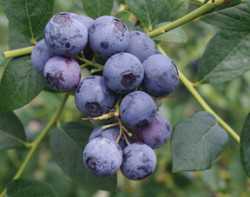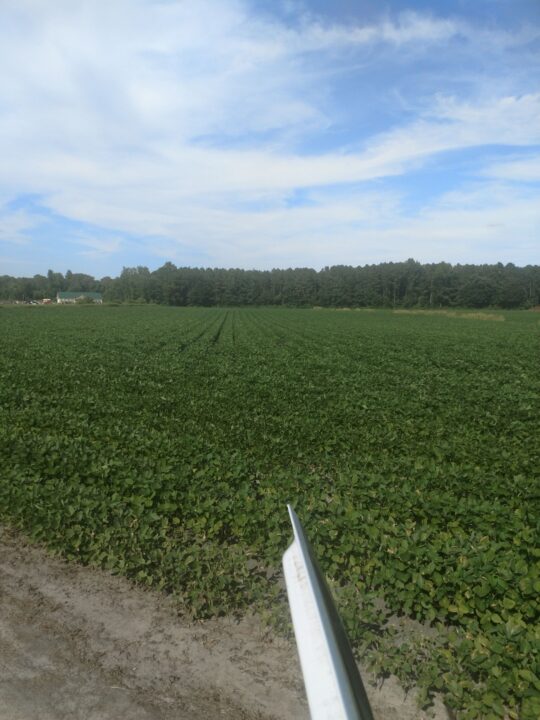
Ask any fruit breeder about the traits they select for, and you will likely hear firmness included in the list. The degree to which firmer fruit are desired is often directly related to the distance to market and postharvest longevity of the fruit. In fact, producers and marketers have gone to great lengths to increase firmness and extend the time before the fruit begin to soften. Examples include: preharvest gibberellic acid application to increase sweet cherry firmness, pre- and postharvest application of 1-MCP to delay ethylene-induced ripening and softening of apples, and modified-atmosphere packaging and controlled atmosphere storage in many fruits. For highly perishable fruit with a short shelflife, varieties with a higher overall firmness can not only be economically valuable to producers, but also be a means to ultimately provide higher quality fruit to consumers.
With the increasing interest in machine harvest for the fresh blueberry market, research and breeding efforts have included a focus on fruit texture. Logically, it would stand to reason that firmer fruit should withstand the machine harvest process better, resulting in a higher percentage packout. Luckily, research by Mark Ehlenfeldt, a USDA blueberry breeder in New Jersey, has indicated that many of the firmest varieties have Vaccinium darrowii ancestry. As this describes essentially all of the plant material from the University of Florida blueberry breeding program (Vaccinium darrowii is the primary source for the low-chill trait enabling Florida blueberry production), it would seem we are starting in the right place in search of machine harvest varieties for fresh market.
Standing Firm
Plants with the crisp blueberry fruit trait — best described as a crunch with the initial bite — appear at a low frequency in our southern highbush breeding material. Research has shown puncture and compression force measurements of blueberry fruit with this crisp trait are consistently firmer than their non-crisp counterparts. However, machine harvest trials at the University of Florida showed no clear trend toward crisp fruit being more resistant to machine harvest than softer varieties. That is, some crisp blueberry selections end up just as soft after machine harvest as standard varieties. This may be due to our inability to differentiate between flesh firmness and skin texture. Over the past two years, we have used trained taste panels organized by Elizabeth Baldwin and Anne Plotto at the USDA-ARS Citrus and Subtropical Products Lab to better define the components of blueberry fruit texture. The hope is being able to more precisely define the characteristics of blueberry fruit texture will allow us to make better decisions on varieties best-suited for machine harvest.
On Hold, For Now
Why Seeking Mentorship in Tough Times Can Be Fruitful
Another aspect of crisp-fruited varieties that is conducive to machine harvesting is the holding ability of the fruit. Holding ability is the length of time that fruit retain acceptable levels of firmness when left on the bush after ripening. This is one path to a more concentrated ripening period, one of the keys to successful machine harvesting. Observations indicate crisp selections tend to have a longer holding ability, a trait that is not valuable for typical Florida hand-harvest timings, but may provide options in a future of uncertain labor costs and availability.
Right now, there are few variety choices that have crisp fruit. Bluecrisp and Sweetcrisp are two releases from UF that are crisp, and Reveille from North Carolina State also has been described as crisp. None of these varieties have been planted in major acreage, primarily because they typically have lower yields than other varieties with comparable harvest seasons. We are evaluating multiple populations to determine the inheritance of this trait. This knowledge will help design crosses to increase the proportion of breeding material with the crisp trait. The goal is to select crisp varieties that have higher yield and will span the market season.
0
1
5
Banking On Berries With Bite
James W. Olmstead, a longtime UF/IFAS professor of blueberry breeding and genetics, is now the Global Blueberry Breeding Director at Driscoll's. See all author stories here.











